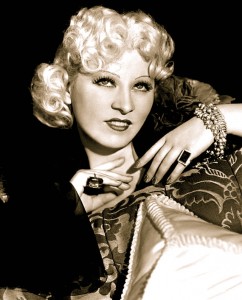Mae West
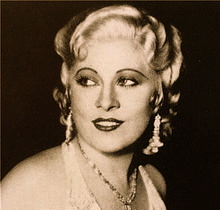
The Best of Mae West
Some of Mae West’s funniest lines from her movies. She was marvellous, she wrote all of them herself.
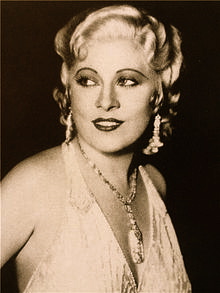 Publicity photo for Night After Night (1932)
Publicity photo for Night After Night (1932)
Mary Jane “Mae” West (August 17, 1893 – November 22, 1980) was an American actress, singer, playwright, screenwriter and sex symbol whose entertainment career spanned seven decades.
Known for her bawdy double entendres, West made a name for herself in vaudeville and on the stage in New York before moving to Hollywood to become a comedienne, actress and writer in the motion picture industry. In consideration of her contributions to American cinema, the American Film Institute named West 15th among the greatest female stars of all time. One of the more controversial movie stars of her day, West encountered many problems, including censorship. When her cinematic career ended, she continued to perform in Las Vegas, in the United Kingdom, and on radio and television, and to record rock and roll albums. Asked about the various efforts to impede her career, West replied, “I believe in censorship. I made a fortune out of it.”
Early Life and Career
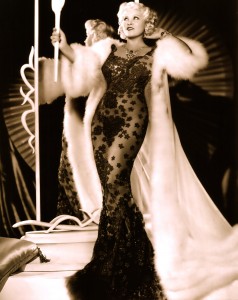 West was born Mary Jane West in Bushwick, Brooklyn, delivered at home by an aunt who was a midwife. She was the eldest surviving child of John Patrick West and Matilda “Tillie” Doelger, whose maiden name was later anglicized to “Dilker” or “Delker”. Doelger had emigrated with her family from Bavaria to the United States in 1886. West’s parents married on January 18, 1889, in Brooklyn and reared their children as Protestant. Her father was a prizefighter known as “Battlin’ Jack West” who later worked as a “special policeman”, and later had his own private investigations agency. Her mother was a former corset and fashion model. Her paternal grandmother was an Irish Catholic, and West’s paternal grandfather, John Edwin West, was of English-Scots descent and a ship’s rigger.
West was born Mary Jane West in Bushwick, Brooklyn, delivered at home by an aunt who was a midwife. She was the eldest surviving child of John Patrick West and Matilda “Tillie” Doelger, whose maiden name was later anglicized to “Dilker” or “Delker”. Doelger had emigrated with her family from Bavaria to the United States in 1886. West’s parents married on January 18, 1889, in Brooklyn and reared their children as Protestant. Her father was a prizefighter known as “Battlin’ Jack West” who later worked as a “special policeman”, and later had his own private investigations agency. Her mother was a former corset and fashion model. Her paternal grandmother was an Irish Catholic, and West’s paternal grandfather, John Edwin West, was of English-Scots descent and a ship’s rigger.
Her eldest sibling, Katie, died in infancy. The other siblings were Mildred Katherine West, later known as Beverly (December 8, 1898 – March 12, 1982), and John Edwin West, II (sometimes inaccurately called “John Edwin West, Jr.”; February 11, 1900 – October 12, 1964). During her childhood, West’s family moved to various parts of Woodhaven, Queens, as well as the Williamsburg and Greenpoint neighborhoods of Brooklyn. It was in Woodhaven, at Neir’s Social Hall (which opened in 1829 and is still extant) that West supposedly first performed professionally.
West was five when she first entertained a crowd at a church social, and she started appearing in amateur shows at the age of seven. She often won prizes at local talent contests. She began performing professionally in vaudeville in the Hal Clarendon Stock Company in 1907 at the age of fourteen. West first performed under the stage name Baby Mae, and tried various personas including a male impersonator, Sis Hopkins, and a blackface coon shouter. She used the alias “Jane Mast” early in her career. Her trademark walk was said to have been inspired or influenced by female impersonators Bert Savoy and Julian Eltinge, who were famous during the Pansy Craze. Her first appearance in a Broadway show was in a 1911 revue A La Broadway put on by her former dancing teacher, Ned Wayburn. The show folded after eight performances, but at age 18, West was singled out and discovered by the New York Times. The Times reviewer wrote that a “girl named Mae West, hitherto unknown, pleased by her grotesquerie and snappy way of singing and dancing.” West next appeared in a show called Vera Violetta, whose cast featured Al Jolson. In 1912 she appeared in the opening performance of A Winsome Widow as a “baby vamp” named La Petite Daffy.
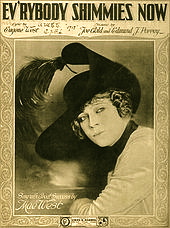 “Ev’rybody Shimmies Now” sheet music cover with portrait, 1918
“Ev’rybody Shimmies Now” sheet music cover with portrait, 1918
She was encouraged as a performer by her mother, who, according to West, always thought that anything Mae did was fantastic. Other family members were less encouraging, including an aunt and her paternal grandmother. They are all reported as having disapproved of her career and her choices. In 1918, after exiting several high-profile revues, West finally got her break in the Shubert Brothers revue Sometime, opposite Ed Wynn. Her character Mayme danced the shimmy,[29] and her photograph appeared on an edition of the sheet music for the popular number “Ev’rybody Shimmies Now.”
Eventually, she began writing her own risqué plays using the pen name Jane Mast. Her first starring role on Broadway was in a 1926 play she entitled Sex, which she wrote, produced, and directed. Although critics panned the show, ticket sales were good. The production did not go over well with city officials, and the theater was raided, with West arrested along with the cast. She was taken to the Jefferson Market Court House, (now Jefferson Market Library) where she was prosecuted on morals charges and, on April 19, 1927, was sentenced to ten days for “corrupting the morals of youth.” While incarcerated on Welfare Island (now known as Roosevelt Island), she dined with the warden and his wife; she told reporters that she had worn her silk panties while serving time. She served eight days with two days off for good behavior. Media attention surrounding the incident enhanced her career.
Her next play, The Drag, dealt with homosexuality, and was what West called one of her “comedy-dramas of life.” After a series of try-outs in Connecticut and New Jersey, West announced she would open the play in New York. However, The Drag never opened on Broadway due to efforts by the Society for the Prevention of Vice to ban any attempt by West to stage it. West was an early supporter of the women’s liberation movement, but said she was not a feminist. She was also an early supporter of gay rights.
West continued to write plays, including The Wicked Age, Pleasure Man and The Constant Sinner. Her productions aroused controversy, which ensured that she stayed in the news, which also often resulted in packed houses at her performances. Her 1928 play, Diamond Lil, about a racy, easygoing lady of the 1890s, became a Broadway hit. This show enjoyed an enduring popularity and West would successfully revive it many times throughout the course of her career.
Motion Pictures
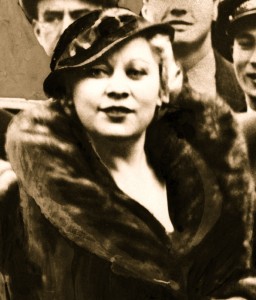 “Diamond Lil” returning to New York from Hollywood, 1933
“Diamond Lil” returning to New York from Hollywood, 1933
In 1932, West was offered a motion picture contract by Paramount Pictures despite being close to 40. This was an unusually high age to begin a movie career, especially for women, but she nonetheless managed to keep this fact ambiguous for some years. She made her film debut in Night After Night starring George Raft. At first, she did not like her small role in Night After Night, but was appeased when she was allowed to rewrite her scenes. In West’s first scene, a hat check girl exclaims, “Goodness, what beautiful diamonds.” West replies, “Goodness had nothing to do with it, dearie.” Reflecting on the overall result of her rewritten scenes, Raft is said to have remarked, “She stole everything but the cameras.”
She brought her Diamond Lil character, now renamed Lady Lou, to the screen in She Done Him Wrong (1933). The film is also notable as one of Cary Grant’s first major roles, which boosted his career. West claimed she spotted Grant at the studio and insisted that he be cast as the male lead. She claimed to have told a Paramount director “If he can talk, I’ll take him!” The film was a box office hit and earned an Academy Award nomination for Best Picture. The success of the film most likely saved Paramount from bankruptcy.
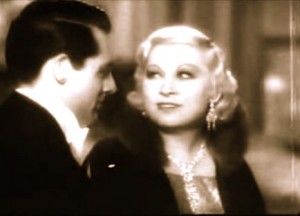 Cary Grant and Mae West in I’m No Angel (1933)
Cary Grant and Mae West in I’m No Angel (1933)
Her next release, I’m No Angel (1933), paired her with Grant again. I’m No Angel was also a financial success, a film that proved to be her most successful film of her entire movie career. By 1933, West was the eighth-largest U.S. box office draw in the United States and, by 1935, the second-highest paid person in the United States (after William Randolph Hearst). On July 1, 1934, the censorship of the Production Code began to be seriously and meticulously enforced, and her screenplays were heavily edited. Her next film was Belle of the Nineties (1934). Originally titled It Ain’t No Sin, the title was changed due to the censors’ objections. Despite Paramount’s early objections regarding costs, she insisted the studio hire Duke Ellington and his orchestra to accompany her in the film’s musical numbers. Their collaboration was a success; the classic “My Old Flame” was introduced in this picture. Her next film, Goin’ to Town (1934), received mixed reviews.
Her following effort, Klondike Annie (1935) dealt, as best it could given the heavy censorship, with religion and hypocrisy. Some critics called the film her screen masterpiece. That same year, West played opposite Randolph Scott in Go West, Young Man. In this film, she adapted Lawrence Riley’s Broadway hit Personal Appearance into a screenplay. Directed by Henry Hathaway, Go West, Young Man is considered one of West’s weaker films of the era.
West next starred in Every Day’s a Holiday (1937) for Paramount before their association came to an end. After the film failed at the box office, West was put on a list of actors called “Box Office Poison” by Harry Brandt on behalf of the Independent Theatre Owners Association. Others on the list were Greta Garbo, Joan Crawford, Marlene Dietrich, Fred Astaire, Dolores del Río, Katharine Hepburn, and James Cagney. The attack was published as a paid advertisement in the Hollywood Reporter and was taken seriously by studio executives. The association argued that these stars’ high salaries and extreme public popularity didn’t affect their ticket sales and thus hurt the exhibitors.
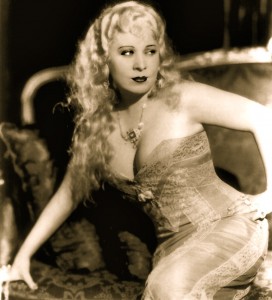 In 1939, Universal Pictures approached West to star in a film opposite W. C. Fields. The studio was eager to duplicate the success of Destry Rides Again starring Marlene Dietrich and James Stewart with a vehicle starring West and Fields. Having left Paramount eighteen months earlier and looking for a comeback film, West accepted the role of Flower Belle Lee in the film My Little Chickadee (1940). Despite the stars’ intense mutual dislike, and fights over the screenplay, My Little Chickadee was a moderate box office success, but the film outgrossed Fields’s previous film, You Can’t Cheat an Honest Man (1939), and the later The Bank Dick (1940).
In 1939, Universal Pictures approached West to star in a film opposite W. C. Fields. The studio was eager to duplicate the success of Destry Rides Again starring Marlene Dietrich and James Stewart with a vehicle starring West and Fields. Having left Paramount eighteen months earlier and looking for a comeback film, West accepted the role of Flower Belle Lee in the film My Little Chickadee (1940). Despite the stars’ intense mutual dislike, and fights over the screenplay, My Little Chickadee was a moderate box office success, but the film outgrossed Fields’s previous film, You Can’t Cheat an Honest Man (1939), and the later The Bank Dick (1940).
West’s next film was The Heat’s On (1943) for Columbia Pictures. She initially didn’t want to do the film but after producer and director Gregory Ratoff pleaded with her and claimed he would go bankrupt if she didn’t, West relented. The movie opened to bad reviews and failed at the box office. West was so chastened by the experience that she would not attempt another film role for the next quarter-century.

